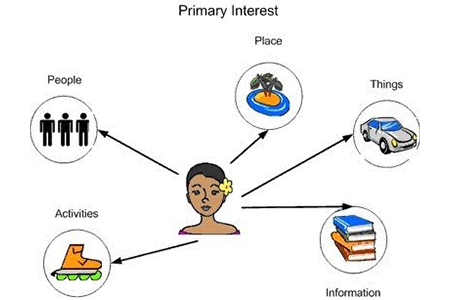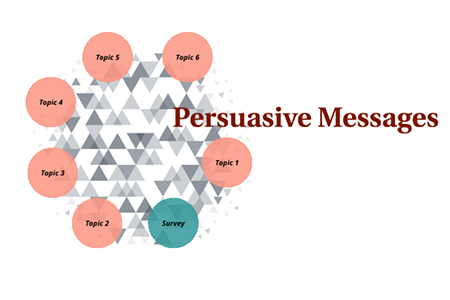Table Of Content
- 1. Introduction
- 2. 10 Essential Features of Advertising
- 2.1. Building Brand Recognition
- 2.2. Encouraging Consumer Action
- 2.3. Consistency in Messaging
- 2.4. Engaging a Wide Audience
- 2.5. Creating a Lasting Impression
- 2.6. Generating Consumer Interest
- 2.7. Trust Building Through Concise Communication
- 2.8. Strategic Promotion
- 2.9. Enhancing Customer Loyalty
- 2.10. Persuasive Messaging
- 3. Conclusion
Introduction
Advertising is a company instrument that is used to market products, services, or ideas targeted toward their audience. Effectively, the essence of advertising lies in changing consumer perception to influence sales. The distinguishing features of advertising include having a persuasive message, a clear brand image, and strategizing for the medium. These features ensure that advertisements can catch the consumers' interests and build a long-lasting relationship. Advertisements build up value, trust, and interaction with consumers and present a multiplicity of platforms. Knowledge of advertising features can assist businesses in developing great ads that resonate with their target market to gain brand awareness and customer loyalty.
10 Essential Features of Advertising
Building Brand Recognition
A key defining attribute of advertisement is the recognition of a brand. Advertisements allow easy identification of a brand when consumers have repeated exposure to it. It is the consistency of colors, logos, and messages that characterizes a brand and makes it memorable. If accompanied by emotional advertisements, advertising builds trust and familiarity with brands by tying an emotional connection to the audience. This kind of recognition influences consumer decisions and generally builds a lifetime loyalty towards the brand. Thus, the advertisement adds visibility to a company in a crowded marketplace.

Encouraging Consumer Action
Effective advertisement does not base itself only in the element of attracting attention but also on the next step to act. That is what makes an advertisement truly effective: when they have features that give consumers almost no time to act, such as purchasing or signing up, or to engage in actions with a brand. By exhibiting benefits and putting forth such things as a reduction on a limited-time offer, ads can create urgency. Effective selling motivates people to act, and this is translated into higher sales and engagement from consumers. Such urgency, paired with an effective message, makes advertising powerful for rapidly changing consumer behavior.

Consistency in Messaging
Advertising consistency is a lifeline. Common features of advertising are all-around message uniformity and building the reaches of trust in a brand. Consistency in tone, style, and content makes it easily identifiable to consumers. The advertisement referring to consumers can be found in television ads, social media, or print; when the same message comes clearly understood, that enhances the values and positioning of the brand. Consistency in messaging also hugs familiarity, by which a brand can position itself well as a reliable brand and a trustworthy one in the eyes of its audience.

Engaging a Wide Audience
Advertising media is well known among features that allow reaching a diversified audience. Thus, delivering the right strategy, advertising can be very narrow to a particular segment of the population while reaching others. From such traditional media as television to modernities like social media, advertisements can generate interest among people from quite different walks of life in quite different conditions and scenarios. Good ads speak by giving relevant messages that connect with the different segments of consumers, thus ensuring a wide audience. Broad-reaching businesses create a global horizon to exploit their potential market.

Creating a Lasting Impression
Advertising is not only about presenting messages; it is also about leaving marks on the audience. A good advertisement remains in a consumer's consciousness and evokes emotions, creating thinking processes that will lead to later actions. This is probably the most powerful of all the features of advertising, that is, creating memorable experiences. Advertisements take the shape of humorous advertisements, emotional ones, or storytelling that creates messages that leave an impact on the audience. Such emotions are what take a normal advertisement to a level where it becomes the brand's mark.

Generating Consumer Interest
This is about generating interest among consumers, which is another important role advertising acts on. Ads gain a hold with their unique selling propositions. These appeal to audience needs and desires. Advertising generates curiosity and interest by employing visually mesmerizing graphics and alluring copy, thus leading consumers to the product. With genuine interest from the client side, companies engage consumers to act. Whether it is online or by making a purchase. So, generating interest where consumers are willing to explore is one important function of advertising.

Trust Building Through Concise Communication
The clear and straightforward message from advertising engenders trust. The ability of good advertising to portray the value proposition quickly and effectively is one of its defining characteristics. This straightforwardness is how advertisements build confidence in the mind of the consumer. Keeping it short and to the point also saves the advertising message from being clouded by unnecessary details, thus holding consumer attention toward understanding the brand's offerings. This process of keeping a good reputation for a long time is vital in developing relationships for the long haul with an audience.

Strategic Promotion
Strategic promotion is the heart of advertising. The characteristics of the advertising medium allow advertising to be executed strategically: the right message, at the right time, to the right audience. This strategic planning is grounded in market trends, consumer behavior, and even the actions of competitors. This certainly optimizes the advertising process in terms of effectiveness and efficiency. Through special offers, discounts, or promoting the advantages of a product, strategic advertising plays a role in engaging and instilling loyalty from consumers.

Enhancing Customer Loyalty
Advertising also helps in creating customer loyalty by keeping the brand at the forefront of thought. Each feature of a good advertisement helps the customer constantly stay engaged with the brand after the initial purchase. By executing advertising for reinforcing brand values and advantages, it rehearses what consumers saw in the first place for getting the brand choice. Loyalty programs, targeted ads, and consistent messaging help to foster long-lasting relationships. Thus, through advertising, businesses ensure that satisfied customers come back as repeat buyers and brand evangelists.

Persuasive Messaging
Persuasive communication is one of the most important of advertising qualities. Persuasive ads depend on storytelling, emotion, and social proof to affect consumers. Argumentatively, emotions are tapped while the real-world benefits are highlighted, leading the consumers to trust the brand and act. Testimonials, favorable reviews, and spottings of the product as being the solution to a set of specific needs are useful persuasive tactics. Such advertising will not just persuade. Activate customer action.

Conclusion
Advertising attributes are consciously set in motion to actively impact experiences, assuming the leading role in consumers' minds. Whether this is the enhancement of recognition for the brand, building trust, usage of strategic promotion, or creation of messages that are engaging enough to convert prospective buyers into customers, an effective advertising agency blends creativity with strategy. These very basic attributes allow businesses to connect with their target audience, sell products, and retain consumers in the long run. The power lies within advertising to sway consumers' choices forever and to keep memories of the same locked within the audience's mind.
FAQs
Advertising also uses repetitive messages for bringing cohesion as well as memory recall within the audience concerning the brand. It has always been hammered into consumers, hence the various messages regarding the givens under a brand identity.
Repetitive media messages will continually induce in the audience a singleness of thought about a brand. People will start identifying themselves with the messages, and such identification will almost compel them to buy from or use the products of the relevant brand.
Advertising persuades audiences through storytelling, emotion, and social proof and builds the bridge between the consumer's needs and feelings that translate into an emotional touch that drives engagement with the brand.
Advertising customizes its messages to the peculiar needs of television, digital, print, and social media by transforming content style, visuals, and tone for optimum effect over each platform.
Analytics to measure advertising performance serve a critical function in determining campaign effectiveness, tracking ROI, and infusing data into decisions for optimizing future ads.
Advertising brings the skill set to bear on two very important fundamentals, beauty and creativity, so the communication remains informative and engaging and does not overwhelm viewers with information.
Advertising maintains every one of its campaigns and promotions in the same tone, visual style, and messaging so that consumers can easily recognize and trust its cohesive identity.
The interactivity present in modern advertising, polls, quizzes, and even game-like content will act as a means of engaging and collaborating with a brand to better consumer experiences.



